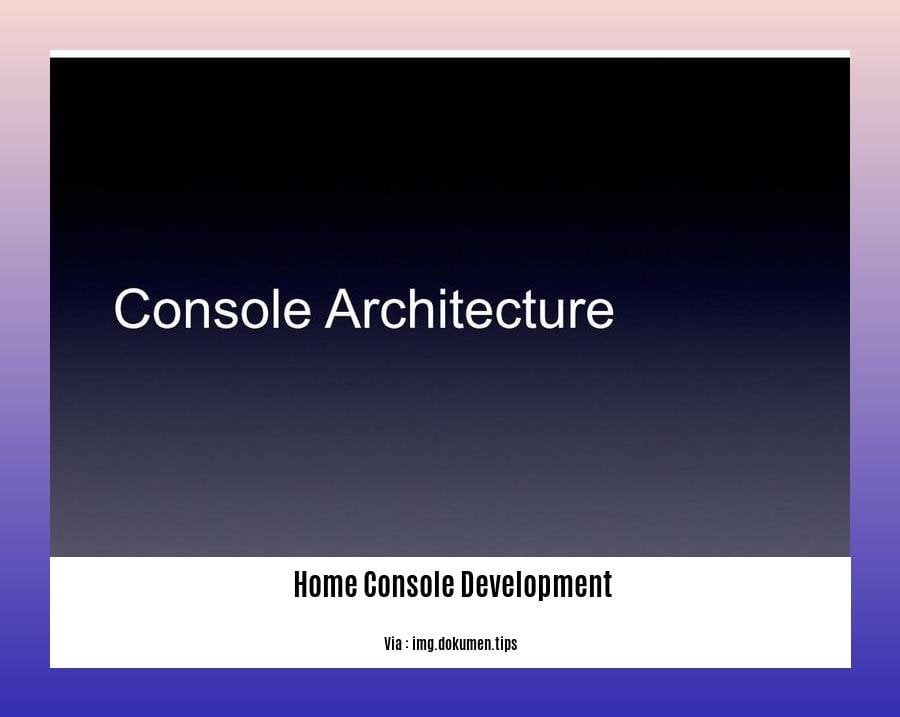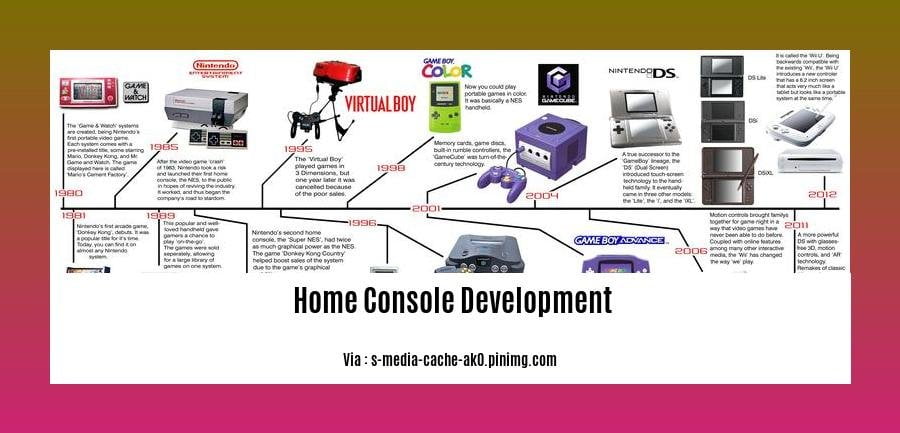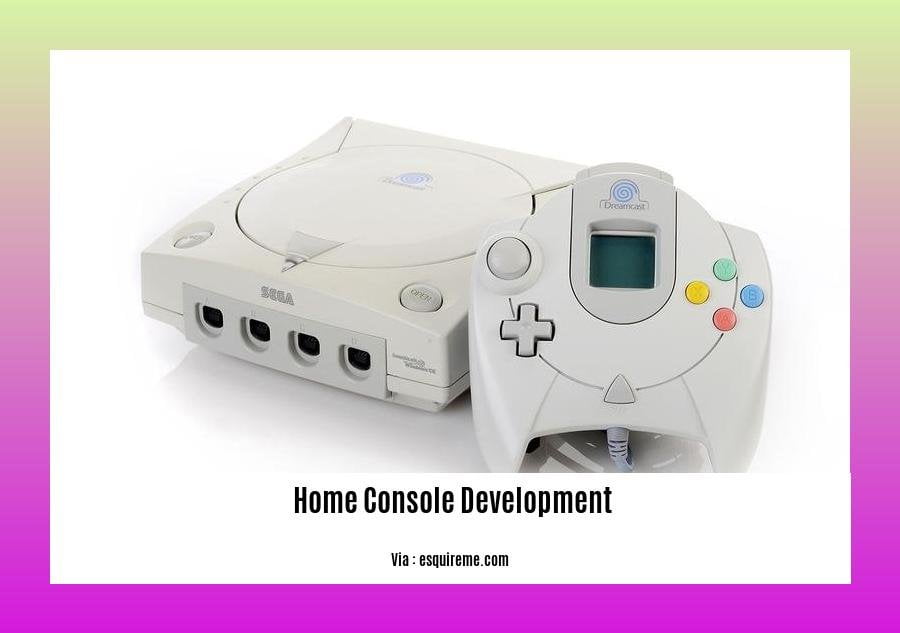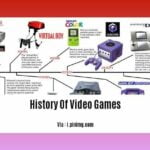Embark on an intriguing journey through [The Evolution of Home Console Development: A Journey of Innovation and Immersive Experiences]. Immerse yourself in the ever-evolving realm of home consoles, where innovation and immersive experiences intertwine to shape the gaming landscape.
Key Takeaways:
- Google Home Developer Center:
- Provides tools for building and innovating home console experiences.
- Use Cases:
- Include smart home automation, entertainment, communication, and productivity.
- Business Resources:
- Help with project management, integration sharing, and certifications.
- Technical Documentation:
- Includes information on Local Home SDK, Cast SDK, and App Flip Testing.
- Additional Information:
- Existing Action on Google projects can be imported for Matter support.
- Home Developer Center Tools help with development and testing.
Home Console Development: A Cornerstone of Gaming Evolution

Home console development has been an integral part of the gaming industry since the dawn of electronic entertainment. These consoles have provided countless hours of immersive experiences for gamers worldwide, and their evolution has been a testament to the constant pursuit of innovation in the field.
Key Milestones in Home Console Development
First Generation (1972-1983): Pioneered by the Magnavox Odyssey and Atari 2600, these consoles introduced basic graphics and gameplay to home audiences.
Second Generation (1983-1990): The Nintendo Entertainment System (NES) and Sega Genesis brought cartridge-based games, advanced graphics, and improved sound capabilities.
Third Generation (1990-2000): The Super Nintendo Entertainment System (SNES) and Sony PlayStation ushered in 16-bit graphics, CD-ROM technology, and 3D polygons.
Fourth Generation (2000-2006): The Microsoft Xbox, Sony PlayStation 2, and Nintendo GameCube introduced online multiplayer gaming, improved graphics, and larger storage capacities.
Fifth Generation (2006-2012): The Sony PlayStation 3, Microsoft Xbox 360, and Nintendo Wii revolutionized gaming with Blu-ray technology, HD graphics, and motion controls.
Sixth Generation (2012-Present): The Sony PlayStation 4, Microsoft Xbox One, and Nintendo Switch continue to push the boundaries of home console development with enhanced graphics, virtual reality support, and streaming capabilities.
Factors Driving Home Console Development
Several key factors have driven the evolution of home console development:
- Technological Advancements: Advancements in hardware and software have enabled more powerful consoles with enhanced graphics, processing capabilities, and storage space.
- Changing Gaming Trends: The rise of online gaming, mobile gaming, and virtual reality has influenced console design and functionality.
- Market Competition: Fierce competition among console manufacturers has fostered innovation and pushed the boundaries of what home consoles can offer.
- Consumer Expectations: Gamers expect cutting-edge graphics, immersive gameplay experiences, and a wide variety of games.
Challenges in Home Console Development
Home console development presents several challenges:
- Cost: Developing and producing home consoles can be an expensive endeavor, requiring significant investment in hardware, software, and marketing.
- Complexity: Consoles are complex devices that require a deep understanding of both hardware and software to design and develop effectively.
- Time Constraints: Consoles have long development cycles, and meeting release deadlines can be a significant challenge.
- Market Fluctuations: The gaming industry is highly volatile, and console manufacturers must navigate changing market trends and consumer preferences.
Future of Home Console Development
The future of home console development holds exciting possibilities:
- Cloud Gaming: Cloud gaming services could eliminate the need for dedicated consoles, offering access to games on any device with an internet connection.
- Virtual and Augmented Reality: VR and AR technologies could transform gaming experiences, creating immersive worlds that blur the lines between reality and virtuality.
- Artificial Intelligence: AI could enhance gameplay by adapting to player behavior and creating more dynamic and challenging experiences.
- Game Streaming: Game streaming platforms could become the primary way to access and play games, reducing the need for physical consoles.
As technology continues to advance and gaming trends evolve, home console development will undoubtedly continue to be a driving force in the gaming industry.
The history of video games dates back to the early 1950s, with the development of simple arcade games such as Tennis for Two and Pong. These early arcade games were the precursors to the modern video game industry, and they laid the foundation for the development of more complex and sophisticated games in the years to come.
Today, the video game industry is a global phenomenon, with billions of people playing games on a variety of platforms. From first-person shooters to role-playing games to mobile games, there is a video game for everyone. The industry is also home to a thriving esports scene, with professional gamers competing for millions of dollars in prize money.
Graphics and Audio Optimization

Optimizing graphics and audio for home consoles is crucial to create immersive and engaging gaming experiences. Consoles have specific hardware limitations compared to PCs, so it’s essential to optimize your game to run smoothly and deliver stunning visuals.
Key Takeaways:
- Hardware Considerations: Optimize graphics based on console hardware constraints.
- Consistent Frame Rate: Maintain a stable frame rate to ensure smooth gameplay.
- Visual Experience and Gameplay: Enhance visual details, resolution, and frame rate for a better user experience.
Optimization Strategies:
- Texture Optimization: Optimize texture quality and resolution to minimize memory usage while maintaining a visually appealing experience.
- Level of Detail: Implement different levels of detail for objects and scenes to reduce rendering complexity in distant or less visible areas.
- Shader Optimization: Optimize shaders to reduce GPU load and improve performance.
- Audio Optimization: Compress and optimize audio files to reduce file size and improve loading time.
- Balance Performance and Quality: Carefully adjust settings to achieve the best balance between visual quality and performance.
Remember, game optimization requires specific knowledge and skills in game development. Seek guidance from industry professionals and resources to enhance your graphics and audio optimization techniques.
Relevant URL Sources:
- Expert Tips on Optimizing Your Game Graphics for Consoles
- How to Optimize a Game: Video Game Optimization Best Practices
User Interface and Accessibility
Crafting a welcoming and accessible user interface (UI) is paramount in home console development. User Interface is the visual gateway through which users interact with the console, while Accessibility ensures inclusivity and ease of use for gamers of all abilities.
Key Takeaways:
- Prioritize accessibility guidelines: Adhere to established standards like WCAG (ISO/IEC 40500) to create interfaces that are perceptible, operable, understandable, and robust.
- Embrace assistive technologies: Support compatibility with assistive devices such as Braille displays and screen readers for visually impaired users.
- Consider cognitive abilities: Ensure menus and navigation are clear and intuitive for gamers with cognitive disabilities.
- Implement adaptive controllers: Provide options for customized controls and input methods to cater to a wider range of physical abilities.
- Test for accessibility: Conduct thorough testing with diverse users to identify and address any potential accessibility barriers.
Benefits of Accessible Design:
- Broader audience: Accessibility enhances the gaming experience for a wider range of users, including those with disabilities.
- Improved user experience: Accessible UIs are generally more user-friendly for everyone, enhancing the overall gaming experience.
- Ethical and legal considerations: Accessibility compliance aligns with ethical practices and may fulfill legal requirements.
Tools and Resources:
Development Toolchain and Best Practices
In the intricate realm of home console development, having the right tools and adhering to established best practices can streamline your journey and elevate your creations. A robust development toolchain seamlessly integrates software and hardware tools, empowering developers to navigate the complex challenges of console-specific game design.
To establish a solid foundation, consider the platform-specific nuances of home consoles. Optimize graphics to account for hardware limitations, ensuring a consistent frame rate across varying specs. Strive to enhance visual details, resolution, and frame rate to captivate players and deliver immersive experiences.
Collaboration and industry best practices play a crucial role in console development. Embrace knowledge-sharing and seek guidance from experienced professionals. Leverage online forums, industry events, and technical documentation to stay abreast of the latest advancements and techniques. By adopting industry standards, you can ensure the quality and compatibility of your creations.
Key Takeaways:
- Leverage a comprehensive development toolchain to enhance productivity and efficiency.
- Optimize graphics and gameplay to suit console-specific hardware limitations.
- Collaborate with peers and embrace industry best practices to refine your skills and stay ahead of the curve.
- Stay informed about the latest advancements in console development through online resources and industry events.
Relevant Sources:
- Unity Blog: Expert Tips on Optimizing Your Game Graphics for Consoles
- Pinglestudio: How to Optimize a Game: Video Game Optimization Best Practices
FAQ
Q1: What are the key hardware considerations for home console development?
A1: Optimizing graphics according to console hardware limitations compared to PCs is crucial to ensure optimal performance.
Q2: How can I ensure a consistent frame rate in home console games?
A2: Game performance should maintain a stable frame rate even on diverse hardware specs, requiring specific knowledge and skills in video game development.
Q3: What are the accessibility guidelines for home console games?
A3: Accessibility guidelines such as WCAG exist to ensure user interfaces are accessible to a wide range of users, including those with disabilities.
Q4: How can I improve the visual experience and gameplay in home console games?
A4: Enhancing visual details, resolution, and frame rate can significantly improve the user experience.
Q5: What role do software development toolchains play in home console development?
A5: Software development toolchains provide an automated and efficient environment for collaboration, testing, and deployment, streamlining the development process.
- China II Review: Delicious Food & Speedy Service - April 17, 2025
- Understand Virginia’s Flag: History & Debate - April 17, 2025
- Explore Long Island’s Map: Unique Regions & Insights - April 17, 2025
















